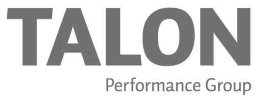Employee commitment, productivity, and retention are emerging as the most critical workplace challenges of the immediate future. For many organizations, “surprise” employee departures can significantly affect the execution of business plans and may eventually cause an unexpected decline in productivity. This is especially true during times of economic uncertainty and related organizational downsizing when the impact of losing key talent increases exponentially.
Consider that:
- The most difficult time to retain and motivate employees is during organizational change.
- Highly engaged and motivated employees can increase the performance and productivity of an organization by as much as 400 percent.
- Losing and replacing an employee may cost up to 2.4 times an annual salary.
- The largest factor in retaining and motivating employees is not money, but the relationship with their immediate supervisors.
So, what can you do today to overcome or avoid these critical challenges and be the “employer of choice” for tomorrow? Wherever your organization is now, you can take steps to attract, inspire, and retain top talent. The organization must address five key performance elements: change, listening, traction, investing, and communicating.
Change. To paraphrase Franklin Roosevelt, “The only thing we have to fear is fear of change.” Change is constant; embrace it. Fear of change is no longer an excuse to avoid exercising strong leadership, making tough decisions, or implementing ideas. The members of your organization are counting on you to lead, direct, and manage effective change. Change today usually means transitioning to a new role, taking on greater responsibility, or leaving the organization. Support change with encouragement and reassurance. It is an opportunity to embrace individual growth and development while strengthening the team and the organization.
Listen. Listen to what you are not hearing—those quiet voices of the introverts, of the newer generations, of your most seasoned, of your diverse employees, of your staff, and of your clients. Are you hearing their ideas, questions, concerns, and solutions? They will tell you exactly where you are doing things right, what’s not working well, and what you need to do to keep them. Listening also strengthens your internal relationships with colleagues and teams. Identify the strengths your organization has and leverage your talent for individual development and strengthening client service. Now is the time to set up lunch-and-learns, roundtables, and team-building exercises. Creating a community within your firm begins with listening.
Traction. The strength of an organization is based on sharing a vision. Has your leadership taken the time to establish the organization’s purpose, values, and goals, and make them known to everyone in the firm, and to your clients? Are key business decisions being driven by them? Are you hiring, promoting, transitioning, and business developing according to the organization’s values, goals, and purpose? Loyalty, commitment, and accountability start with the building blocks of the organization—who and what you are now and where you are going. It is only with this foundation in place that you will attract, retain, and maximize the performance of top talent that is right for your organization.
Invest. Are you offering training and development to your leaders, management, and staff? The firm next door is. Most C-level executives have worked with a professional coach. The days of “figure it out on your own, I did” are gone. Organizations today cannot afford to wait for employees to figure it out on their own, and the new generations will not support this old model. They expect training, mentoring, and guidance from their leaders and they will not hesitate to go where their friends are finding exactly that. It is important to provide quality training beginning early in the career to grow and develop your new leaders. New hires are trained on interpersonal skills such as professional dress, presence, a successful handshake, and client communications. Emerging leaders are coached on business development, presentations, effective delivery of tough messages, and expectation setting. Highly effective professionals need to know much more than simply the tasks associated with their positions. Don’t rely on skill development programs to be the extent of your professional and leadership training.
Communicate. Is your communication system clear, simple, and consistent? Do people know what is expected of them? Current research indicates that the supervisor most influences a person to depart from an organization. Other reasons, in order of frequency, are inability to use core skills, not being able to affect an organization’s goals, and inability to grow and develop within the organization. An effective communication system can bridge the gap between supervisor and employee. Enhanced communication helps supervisors better understand the motivational drives and interests of each individual, provides feedback on performance and style, and highlights development opportunities. Managing and measuring the needs of employees or teams helps them build productive relationships with their co-workers, supervisors, and clients. People who feel engaged will put in the extra effort to get a job done and do it well. Instead of catching the 5:00 bus, they won’t mind catching the 6:00 bus to support the team and the client.
Successful organizations realize retention and talent management are integral to sustaining leadership and growth in today’s marketplace. In fact, a stable workforce becomes a significant competitive advantage. An organization with unstable conditions is forced to invest thousands of dollars in recruiting, orientation, training, overtime, and supervision. Organizations without continuity don’t have ongoing close relationships with customers. Loyalty is fragile, stress is high, conflict is more likely, and efficiency is hampered. These challenges make it difficult for an organization to compete.
Support change, listen to your talent, know and share your organization’s vision and core values, and provide development opportunities so people are engaged and know they make a difference. You will then be an “employer of choice.”
